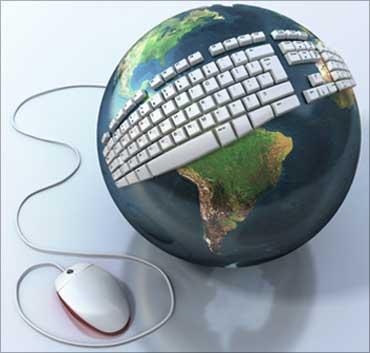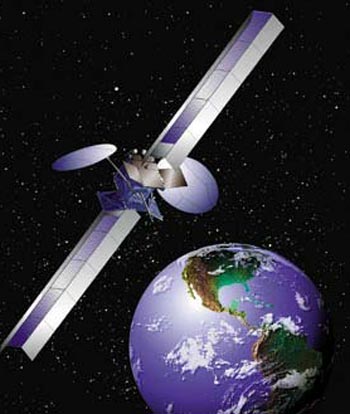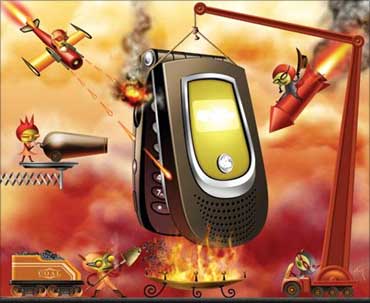 | « Back to article | Print this article |
237,000,000 Internet users in India by 2015!
India will see its number of Internet users triple to 237 million from the current 81 million by 2015, according to a report.
In a study titled Internet's New Billion, the Boston Consulting Group said Brazil, Russia, India, China and Indonesia will have more than 1.2 billion Internet users by 2015 -- well over three times the number of Internet users in Japan and the US combined. In 2009, the BRICI countries had some 610 million Internet users.
"Internet penetration rates in the BRICI countries will experience compound annual growth of nine to 20 per cent from 2009-2015, driven predominantly by young users who will form the digital-market eco-systems that will be in place for generations to come," the management consulting firm said.
Click NEXT to read further. . .
237,000,000 Internet users in India by 2015!
With BRICI countries constituting many of the worlds most populous nations, 'it may come as little surprise that their digital-consumer ranks will swell so quickly,' the report added.
Describing India as a 'low-maturity and high growth market', BCG said Internet penetration rate in India is expected to reach 19 per cent by 2015, up from the current seven per cent.
"There are currently about 81 million Internet users in India number that will nearly triple by around 2015 to 237 million," the report said.
India's Internet use is concentrated mainly in the larger cities, where many users are migrants from smaller towns.
This group tends to have had limited exposure to the Internet and therefore typically has a narrower range of online needs than more experienced users.
Click NEXT to read further. . .
237,000,000 Internet users in India by 2015!
"Offsetting this situation is the prevalence of younger Indian users," the report said. Indian Internet users spend only half an hour online each day, on averagethe lowest rate among all the BRICI countries.
This average will increase to only 0.7 hour per day by 2015, leaving India still bringing up the rear among BRICI users in terms of daily time spent online.
"However, this is a conservative projection and that there could be some major surprises depending on how quickly pricing comes down and availability increases," it added.
Among the most prominent trends is that BRICI digital consumers are far more likely to be meeting their digital needs through mobile phones than through personal computers.
With PC penetration still quite low, mobile phones are cheaper and more convenient tools for both communicating and seeking out entertainment.
For India, the next big growth opportunity should emerge from the rural market where penetration of mobile phones is far less than in urban markets, which have already begun to show signs of saturation.
Click NEXT to read further. . .
237,000,000 Internet users in India by 2015!
"The biggest gap in rural areas has been network coverage and distribution channelsa divide that most companies are currently trying to bridge. There is an untapped opportunity for improving data usage in all of Indias consumer segments," it added.
Indians' mobile-phone activity is limited almost exclusively to phone calls and SMS, although only about half of India's 507 million mobile-phone owners use the latter.
Just 5 per cent use mobile video.
"This could change when 3G and other forms of wireless broadband are launched in earnest."
Click NEXT to read further. . .
237,000,000 Internet users in India by 2015!
The BRICI countries currently have about 1.8 billion mobile-phone SIM card subscriptions, compared with a combined total of 394 million in the United States and Japan.
China, India and Indonesia have SIM penetration rates ranging between 41 per cent and 66 per cent.
By comparison, the United States and Japan are both at around 90 per cent.
By 2015, SIM penetration in China and India is expected to reach 84 per cent and 75 per cent, respectively owing, among other factors, to users taking advantage of prepaid plans from different operators.
Currently 60 per cent of BRICI Internet users are under the age of 35.
As they earn even higher incomes and develop more complex online needs, there will be a colossal opportunity for digital companies to monetise services and products.
Click NEXT to read further. . .
237,000,000 Internet users in India by 2015!
Given how rapidly the BRICI markets are developing, companies planning entry strategies will have to act quickly or risk missing the opportunity to connect with consumers now and grow with them throughout the coming decades, BCG said.
"The Internet is already having a fundamental impact on consumption patterns, and the patterns we're seeing are significantly different from those in the United States and Japan," says report coauthor David Michael, who heads BCG's Global Advantage practice.
"Companies relying solely on traditional means for reaching consumers in the emerging markets need to understand the impact that the shift to digital media is going to have," the report added.





